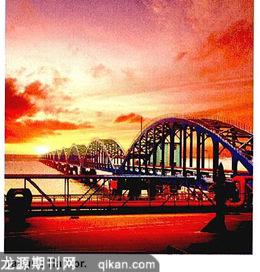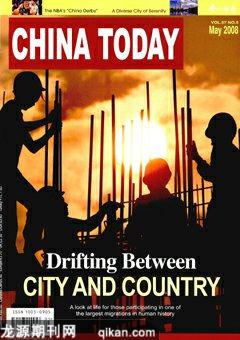Yangpu:A Seaside Industrial Landmark
HAN LI

HAINAN Island off Chinas southern coast boasts more than just beautiful seascapes. A popular tourist destination, it has top-notch hotels, convention facilities and golf courses. As well as stunning natural scenery, the island features several notable cities, including the seaside metropolis of Haikou in the north, the scenic “tourist resort and ecological city” of Sanya in the south, and the historic city of Qionghai and picturesque Boao in the east. However, these cities alone are not adequate to propel the ambitious economic plans of this young province. The northwestern Yangpu Peninsula has become a national-level economic development zone with a view to making the area a leading industrial center.
An Industrial Zone Rich in Natural Advantages
In March 1992, Hainan won the State Councils approval to build the Yangpu Economic Development Zone as the islands industrial engine. Surrounded on three sides by sea, Yangpu has a tropical island monsoon climate but is seldom affected by typhoons. The economic zone sits at the center of major international shipping lanes between Southeast and Northeast Asia, looking across the sea to Guangxi Zhuang Autonomous Region in the north and Vietnam to the west. Yangpu Peninsula features 50 kilometers of deep-water coastline able to accommodate more than 80 large-tonnage berths.
Though the flat coastal area is not suitable for farming, it is ideal for large industrial projects. Yangpus offshore seabed is rich in oil and natural gas resources. A preliminary study revealed the geological petroleum reserves of the surrounding South China Sea to be between 23 and 30 billion tons. This natural blessing provides a great advantage for Yangpus development as a coastal petrochemical base.
In addition to shipping, the area is well serviced by overland transport. Yangpu is connected to inland areas by the cross-sea railway from Guangdongs Zhanjiang to Hainans Sanya, and the islands circuit expressway. The peninsula also has easy air access, being 130 kilometers from Haikous Meilan International Airport and 280 kilometers from Sanyas Phoenix International Airport. The development zone currently covers 31 square kilometers, to be expanded to 69 square kilometers by the time of the projects completion.
Awakening Over a Decade
Though the Yangpu project was established in 1992, the development zone remained stagnant for more than a decade for lack of a clear development strategy and disputes regarding the areas development mode.
In 2003, Wei Liucheng, current secretary of the CPC Hainan Provincial Committee, left his post as CEO of the China National Offshore Oil Corporation and became Hainans vice governor. A year later he was elected governor of Hainan by the Hainan Provincial Peoples Congress. Soon after taking office, he went on an inspection trip to Yangpu. Since then the provincial government has successfully reorganized the development zones management structure and finalized the development mode based on government guidance.
In April 2007, Premier Wen Jiabao signed off on the Yangpu Free Trade Port Area, officially making Yangpu Chinas fourth free trade port. The others are Shanghais Yangshan, Tianjins Dongjiang and Dalians Dayaowan. Yangpu is the only such port located in southern China.
Industrial Transformation
The results of these changes to Yangpus status are obvious on the peninsula. Sixteen years ago, Yangpu was an out-of-the-way fishing village. Today it has been transformed into a modern industrial city. Yangpu Bay is busy with inbound and outbound oil tankers, its seashore illuminated by the beacons of oil derricks and neon lights flashing on the facades of industrial and commercial structures.
The zone is also home to extensive amenities for everyday living, such as banks, educational institutions from kindergarten through high school, hospitals, hotels, restaurants, a cinema and a stadium. There are also extensive holidaymaking facilities such as hot springs and a golf course.
Ding Shangqing, head of the Yangpu Administration, says that “internationalization” is the “golden key” to Yangpus development. His administration aims to become a “competent, efficient, clean and trustworthy” service platform that meets international standards, providing investors with convenient and low-cost services.
With its preferential free trade port area policy and rich land, port and industrial resources, the area is attracting large investors from around China and across the globe. These investors are building Yangpu into a competitive petrochemical base, petroleum commercial reserve base, and integrated pulpwood afforestation and papermaking industrial base. The extensive port and transportation facilities mean Yangpu is also becoming a regional logistics and navigational center linking Southeast Asia, Beibu Gulf and southern China.
Chinas rapid economic development has exerted great pressure on the supply of energy and raw materials, such as oil, gas and paper pulp. This situation has provided great opportunities for Yangpus 8-million-ton oil refinery, 1-million-ton paper pulp mill, and 1.6-million-ton papermaking and gas-powered generator projects. More large-scale schemes are being negotiated to complete Yangpus extensive industrial chain. Led and propelled by these large projects, Yangpu is rapidly growing into a regional industrial powerhouse.

